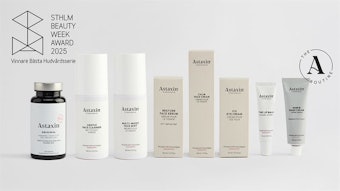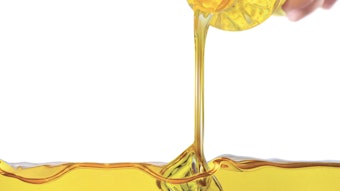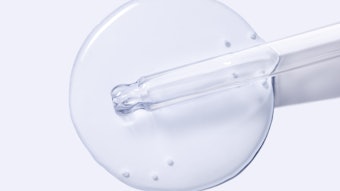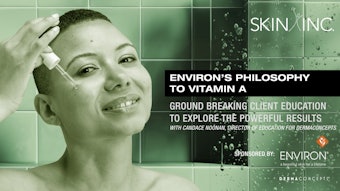
Although the general public typically blames the species of bacteria named C. acnes (formally referred to as P. acnes) for acne breakouts, the truth is a bit more complicated.
The presence of C. acnes strains on the skin certainly correlates with acne cases, but they aren’t necessarily responsible for the occurrence of acne (correlation vs. causation). For example, analyzing skin samples from people with clear skin indicates that these individuals possess many of the same C. acnes strains as acne sufferers. Every follicle on the face of every person on the planet has C. acnes growing in it. Not only that, it is the vast majority of what grows there. Despite the stigma, it is noteworthy that there tends to be more C. acnes in healthy follicles than in follicles that have skin issues such as acne.
The reality is that the overall composition of one’s skin biome (including the microbiome and the skin environment) is much more relevant to skin health than the mere existence of any particular C. acnes strain. The rest of this article will detail why different strains of C. acnes bacteria might affect skin differently and outline steps to take to achieve optimal skin health.
Examining the Different Strains of C. acnes
Despite the discourse surrounding C. acnes — that they allegedly trigger acne cases — multiple recent studies indicate that acneic skin actually has relatively fewer C. acnes, but a large prevalence of other skin microbes. For example, some research has found that acne cases are associated with an increased presence of Staphylococcus epidermis in the follicles. Although some specialists believe S. epidermis contributes to acne prevention, it’s also possible that they contribute to some acne breakouts.
Not all C. acnes bacteria strains are created equal. In fact, there’s quite a bit of variance between different subspecies. In order to best compare and contrast those variances, researchers categorized C. acnes into three subspecies: acnes, elongatum and defendens. While C. acnes has been associated with skin issues, C. acnes defendens has been observed to be beneficial to skin health and appearance.
Related: Is Microbe Modulation the Future of Acne Care?
The following are some of the other noteworthy differences between the classifications of C. acnes strains, including those that make them more or less culpable for skin diseases like acne.
Some C. acnes bacteria species possess a different genetic makeup than their cohorts, or at least express their genes differently. For example, in a study comparing C. acnes strains, the C. acnes strains observably generated more of the gene products for CAMP2, CAMP3, and CAMP5, while producing little to no gene product for CAMP1. On the other hand, protective C. acnes defendens created more CAMP1 gene products, but very little of the others. So while these are the same genes in the same species of microbe, they operate with distinct differences that ultimately impact how they affect the human host.
Some C. acnes strains do release inflammatory substances, and numerous scientific studies used pathogenic strains (e.g., strain 6919) to intentionally cause inflammation in the test subjects. However, we’ve also learned that certain strains of C. acnes don’t cause inflammation, but actually protect against it, such as strains of C. acnes defendens like XYCM42.
Clearing Up the Misconceptions About C. acnes
My own research confirmed these findings when my team obtained a sample of a strain of C. acnes defendens from a volunteer participant’s skin swab. Further tests of the impact of these protective strains on human cells revealed something remarkable. Not only did the C. acnes strain not trigger skin inflammation, but it prevented inflammation, even when our research staff deliberately attempted to cause it.1
These findings correspond with prior research on this topic and carry the implication that some specific C. acnes strains might not merely be commensal, but might even be somewhat symbiotic in nature. These aren’t the only differences between pathogenic and protective C. acnes strains. The protective strains frequently possess CRISPR elements — that is to say, a sort of bacterial immune system that safeguards the integrity of the organism’s genome. In contrast, pathogenic strains tend to lack these elements, which leaves them susceptible to incorporations of genetic material produced by phages and other pathogenic strains. This can trigger the materialization of pathogenic traits.
These discoveries have critical implications. Some C. acnes species, namely the protective strains, are essential to promoting and preserving skin health. Protective C. acnes species secrete substances that help keep the skin safe from pathogens, as well as environmental dangers like free radicals.
Related: Touching Clients With Acne
Here’s a small sampling of the ways protective C. acnes benefits the skin:
- C. acnes produce propionic acid, which is a short-chain fatty acid that can suppress the growth of pathogens such as S. aureus, including MRSA. Propionic acid has also displayed broad-spectrum antimicrobial behavior against Escherichia coli and Candida albicans.2
- C. acnes produce RoxP, which is a powerful antioxidant that has been shown to be as effective as an antioxidant like vitamin C or vitamin E.
- C. acnes have fewer porphyrins. While disease-associated C. acnes strains produce large numbers of irritating porphyrins, health-associated strains secrete few, if any.
Ongoing research suggests there are potential advantages to using skin-native strains of protective C. acnes for skin health. Curation of a balanced skin microbiome is looking like a good way to promote and preserve the health and beauty of the body's largest organ.
Since we’ve now learned that protective C. acnes defendens are a primary contributor to skin health, dermatologists and other skin care professionals should stop recommending topical skin products designed to kill C. acnes and/or eliminate skin oils that foster C. acnes. Instead, prioritize products that curate the right microbes and foster the right skin environment.
References
- Rhee, M. S., Alqam, M. L., Jones, B. C., Phadungpojna, S., Day, D., & Hitchcock, T. M. (2022). Characterization of a live Cutibacterium acnes subspecies defendens strain XYCM42 and clinical assessment as a topical regimen for general skin health and cosmesis. Journal of Cosmetic Dermatology.
- Wang, Y., Dai, A., Huang, S., Kuo, S., Shu, M., Tapia, C. P., ... & Huang, C. M. (2014). Propionic acid and its esterified derivative suppress the growth of methicillin-resistant Staphylococcus aureus USA300. Beneficialmicrobes, 5(2), 161-168.
Thomas Hitchcock, PhD. is the Chief Science Officer for Crown Laboratories, where he oversees clinical development, medical affairs, biological sciences, product development, and research and development for the privately held, fully integrated global company dedicated to developing and providing a diverse portfolio of safe and effective scientific solutions for life-long healthy skin. Dr. Hitchcock is a formally trained scientist with expertise in molecular genetics, microbiology, and dermatology. He has 20+ years of research experience, including basic science, preclinical, and clinical research across several therapeutic areas. He has also been issued patents on his inventions in aesthetic medicine, dermatology, and microbiology. Dr. Hitchcock lectures and presents his research internationally. His work has been published in notable journals such as the “Journal of Biological Chemistry,” “Annals of the New York Academy of Sciences,” “Clinics in Plastic Surgery and Nature,” “Journal of Cosmetic Dermatology,” “Aesthetics Surgery Journal,” “Nucleic Acid Research,” and “Cell Transplantation.”










